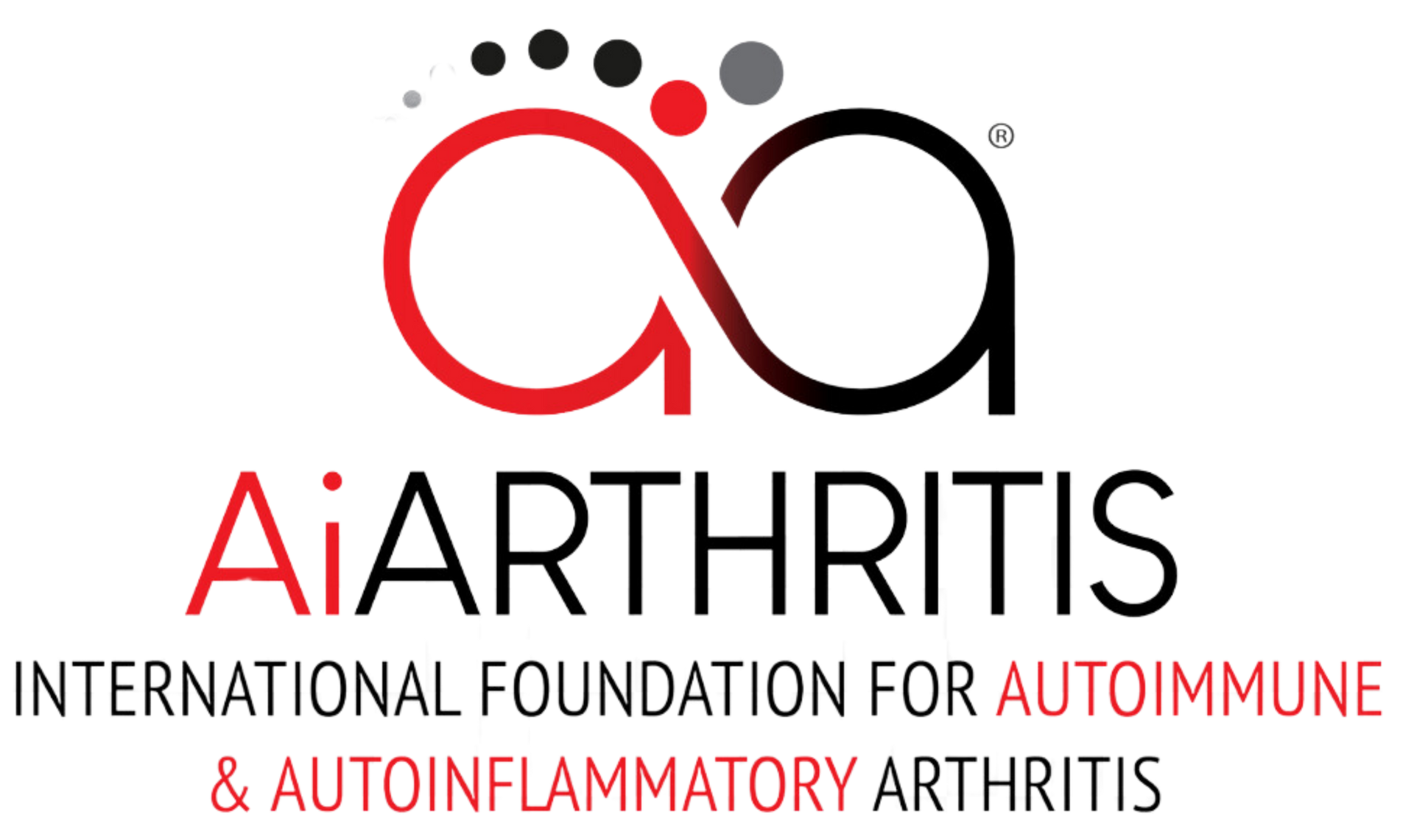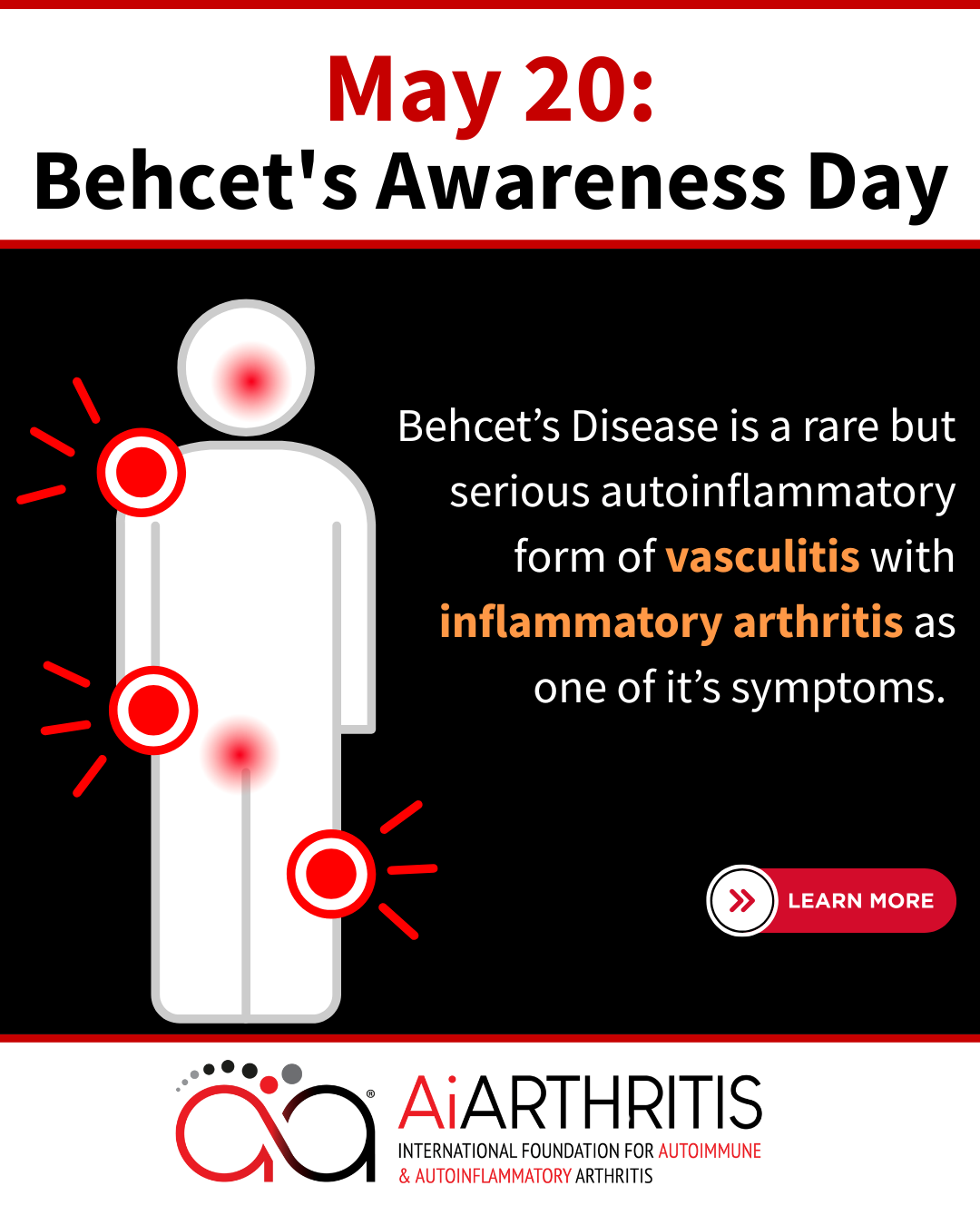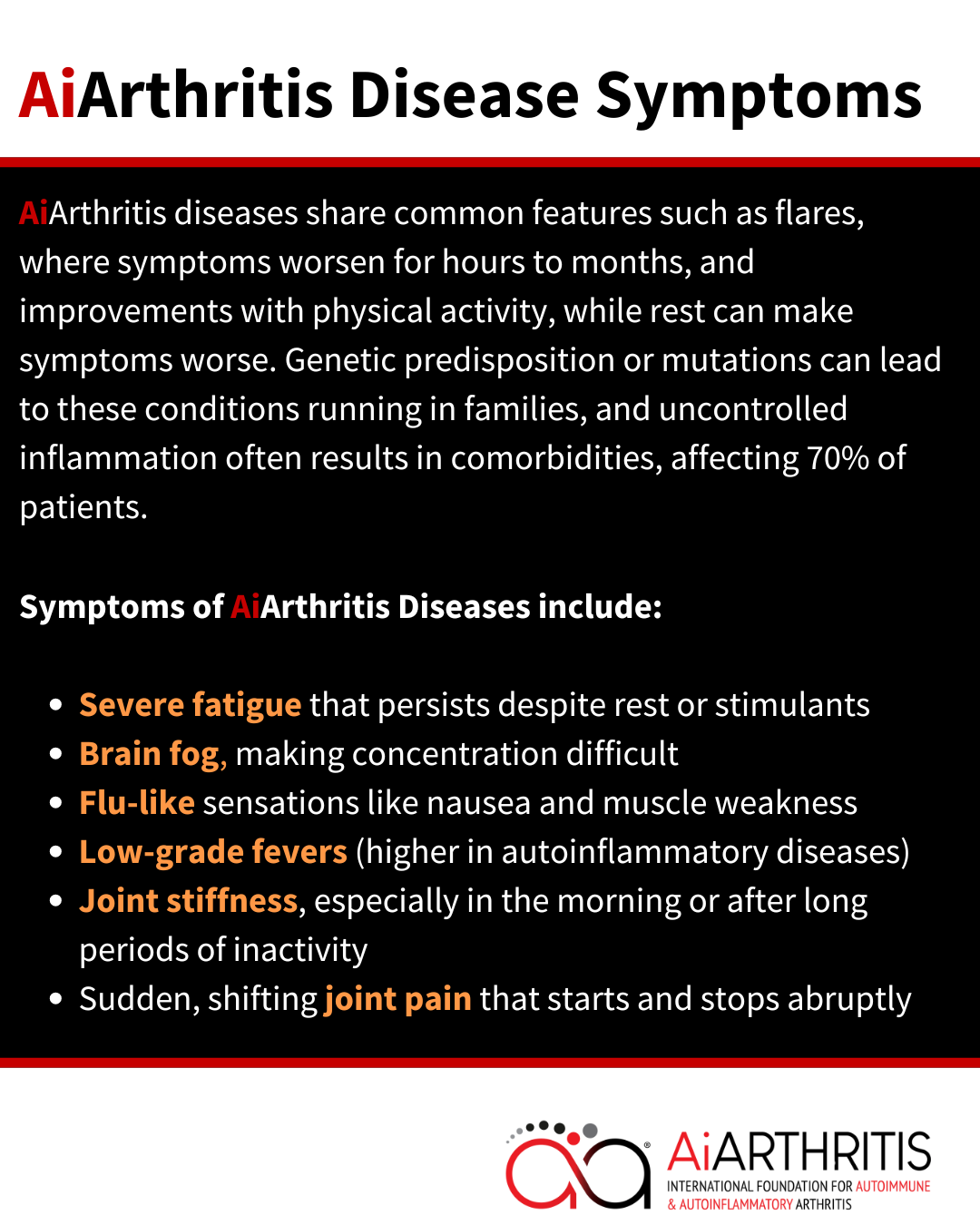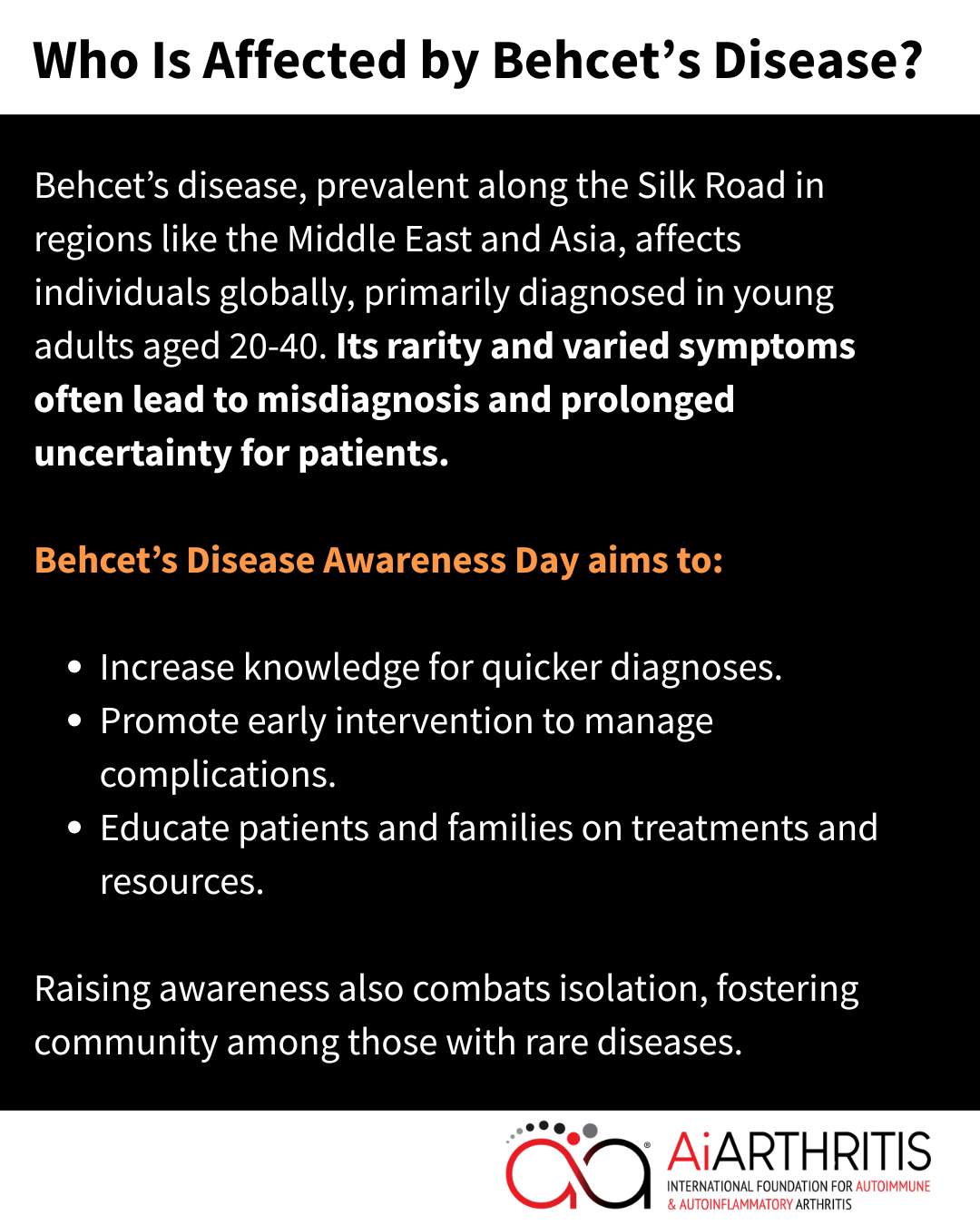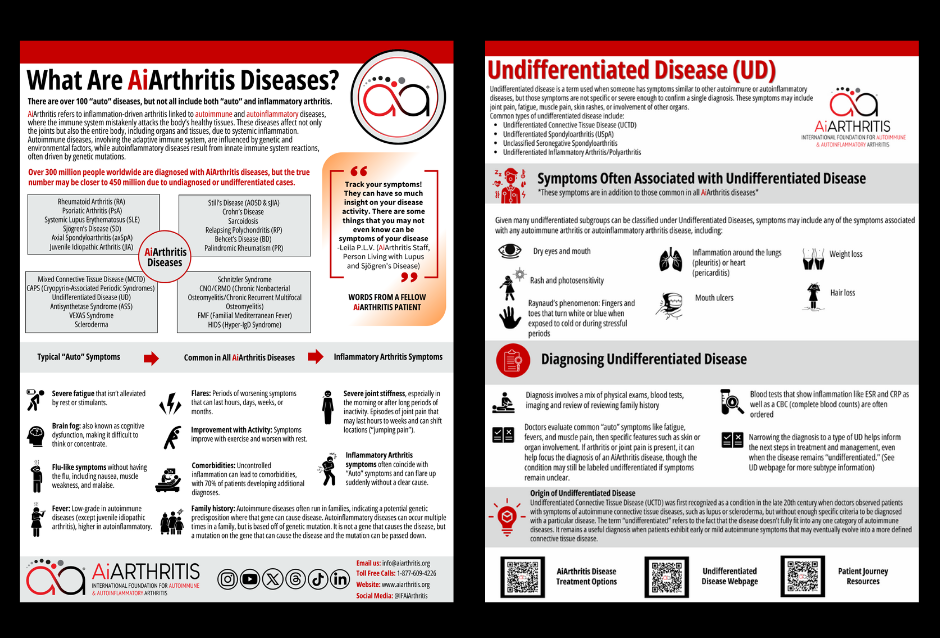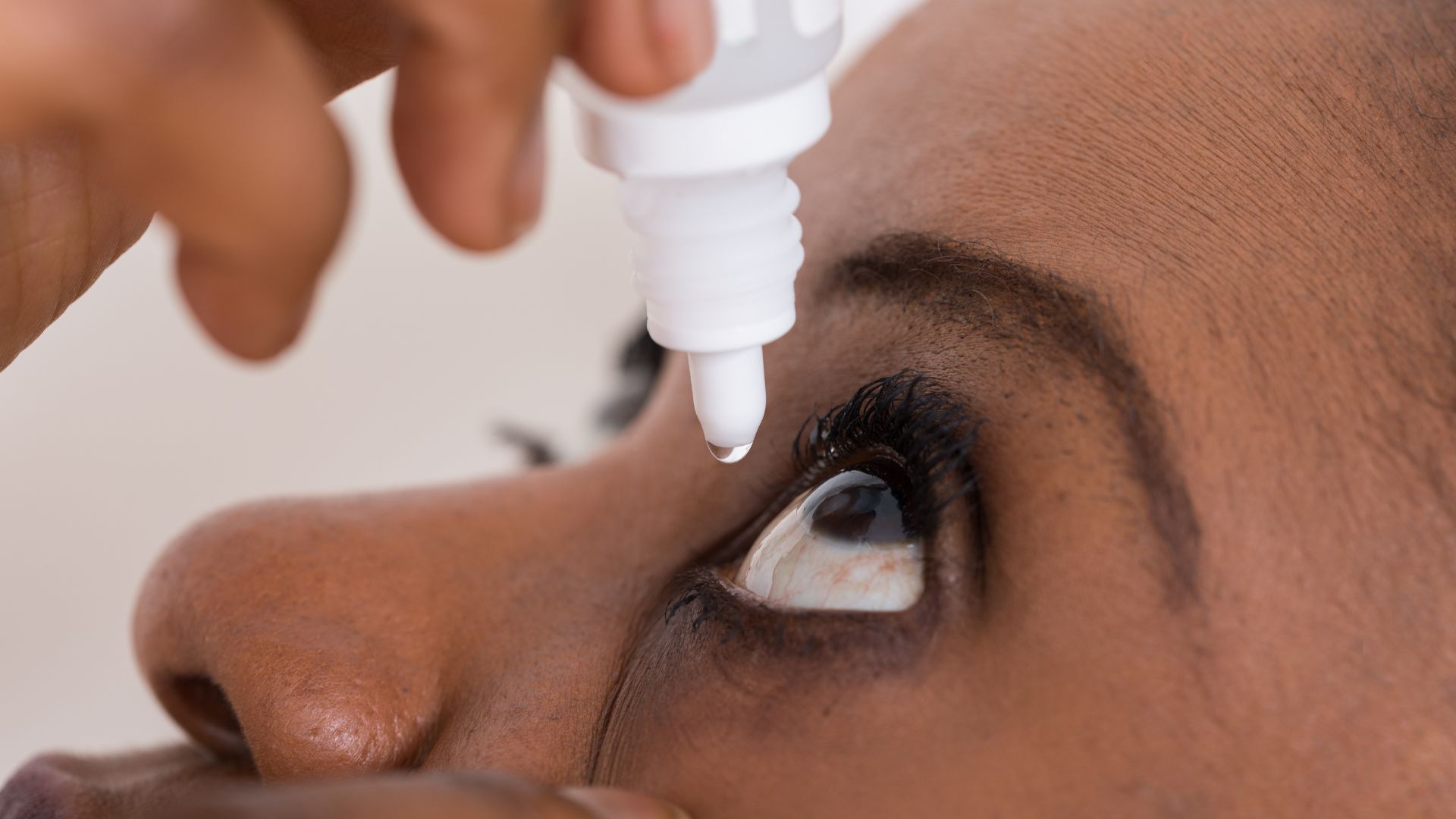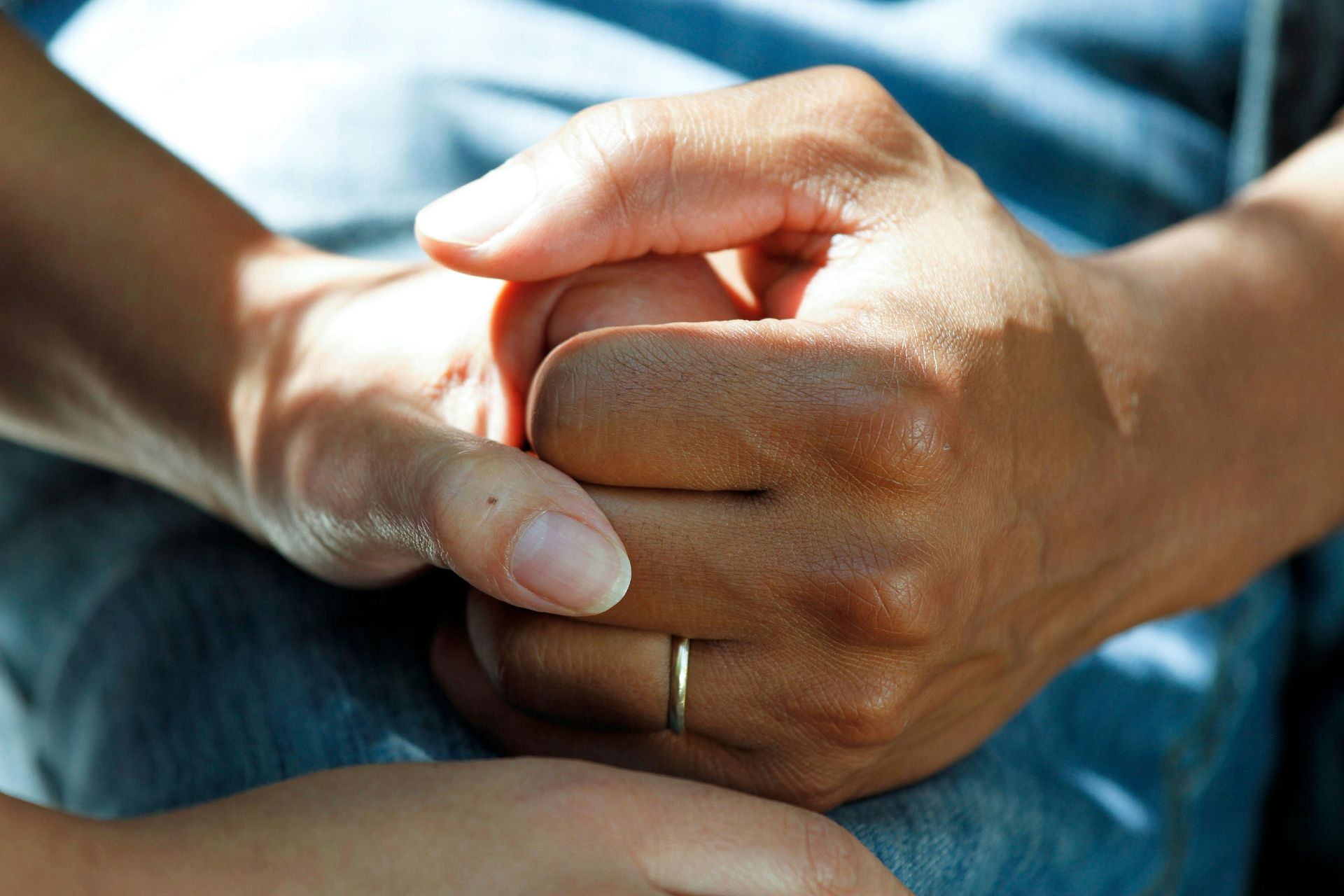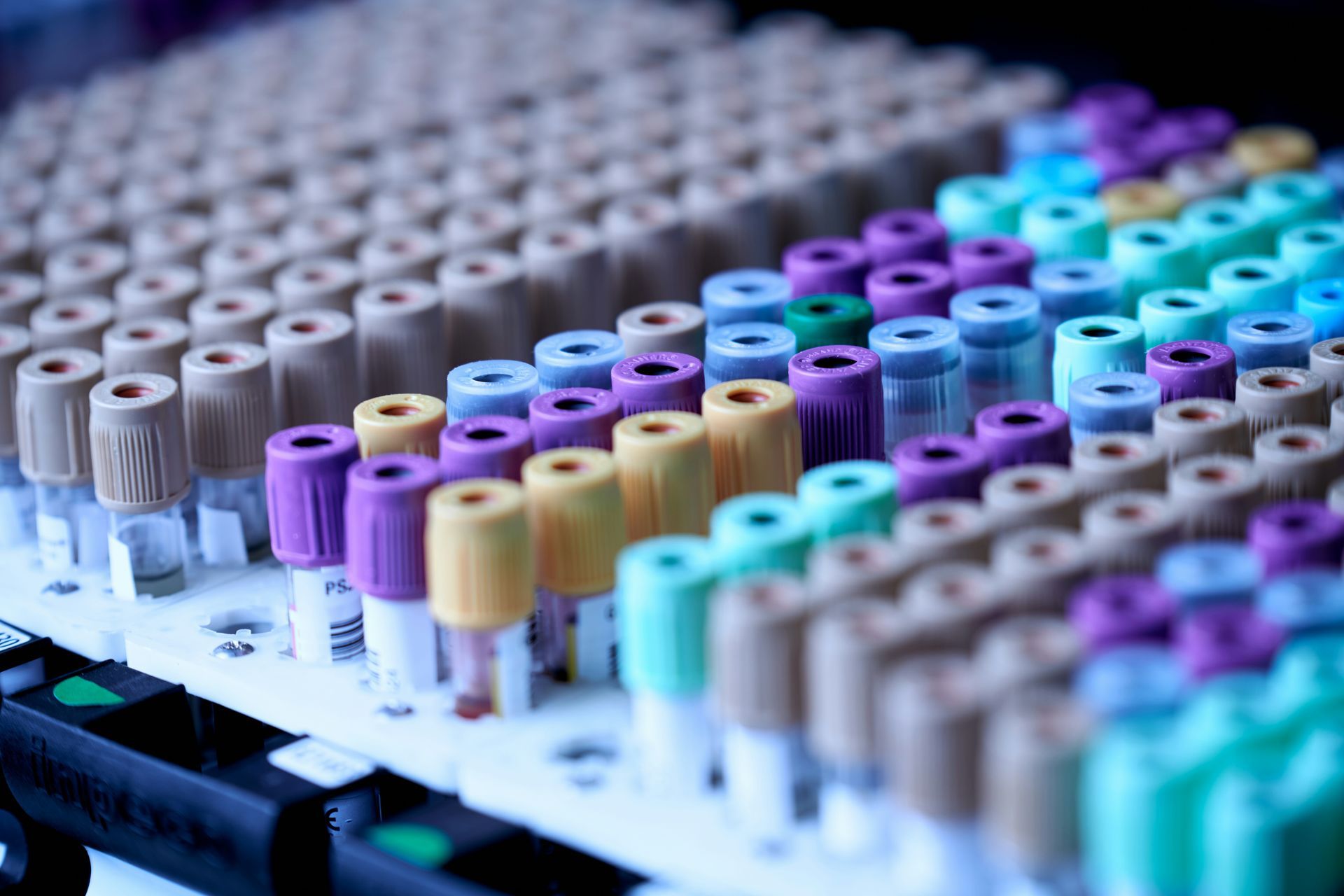Are you or a loved one navigating life with AiArthritis diseases? The International Foundation for Autoimmune & Autoinflammatory Arthritis (AiArthritis) brings you this comprehensive guide to better understand these conditions and their symptoms. Learn about over 20 AiArthritis diseases, discover the importance of symptom tracking, and find support tailored for you.
May 20: Behcet's Awareness Day

Behcet's Disease Awareness Day: Highlighting a Rare but Life-Changing Condition
Every year on May 20th, Behcet's Disease Awareness Day serves as a vital platform to shed light on Behcet’s disease, a rare but serious autoinflammatory form of vasculitis. This day unites patients, caregivers, and advocates to educate others, promote understanding, and push for better care, treatment, and research efforts to improve the lives of those affected.
AiArthritis Disease Symptoms
AiArthritis diseases share common features such as flares, where symptoms worsen for hours to months, and improvements with physical activity, while rest can make symptoms worse. Genetic predisposition or mutations can lead to these conditions running in families, and uncontrolled inflammation often results in comorbidities, affecting 70% of patients.
Key symptoms include:
- Severe fatigue that persists despite rest or stimulants
- Brain fog, making concentration difficult
- Flu-like sensations like nausea and muscle weakness
- Low-grade fevers (higher in autoinflammatory diseases)
- Joint stiffness, especially in the morning or after long periods of inactivity
- Sudden, shifting joint pain that starts and stops abruptly
What Is Behcet’s Disease?
Behcet’s disease, also called Behcet’s syndrome, is a rare systemic condition that causes inflammation in blood vessels throughout the body. As a result, it can affect multiple organs and systems, with symptoms varying widely from person to person.
Common symptoms include:
- Oral and genital ulcers: Painful, recurring sores are often among the earliest and most recognizable signs of Behcet’s disease.
- Eye inflammation: Uveitis (inflammation of the eye) can lead to pain, blurred vision, redness, and potential vision loss if left untreated.
- Skin lesions: These may include acne-like sores or tender red bumps.
- Joint pain: Arthritis-like symptoms in knees, ankles, and other joints are common.
- Gastrointestinal: In some cases, inflammation can affect the digestive tract
- Neurological : Inflammation of the brain and spinal cord, with severe headaches, stiff neck, and fever in the brain, leading to more severe complications.
- Lung involvement
Behcet’s disease is considered part of a group of rare autoimmune disorders known as vasculitis, in which the immune system attacks healthy blood vessels. Its exact cause remains unknown, though genetics and environmental factors are thought to play a role.

Who Is Affected by Behcet’s Disease?
Behcet’s disease is more prevalent in regions along the ancient “Silk Road,” such as the Middle East, Mediterranean, and Asia, but it can affect individuals worldwide. Most commonly diagnosed in young adults between ages 20 and 40, the condition impacts men and women, though its severity and manifestations may vary by gender.
Treatment and Management
While there is no cure for Behcet's disease, several treatment options can help control inflammation and manage symptoms:
- Medications: These may include corticosteroids, immunosuppressants, and biologics to reduce inflammation and regulate immune activity.
- Symptom-specific care: Topical treatments for ulcers, as well as eye drops for uveitis, can provide targeted relief.
- Lifestyle changes: Stress management, a healthy diet, and avoiding known triggers may help reduce flare-ups.
- Ongoing monitoring: Regular check-ups with specialists, such as rheumatologists or ophthalmologists, are crucial for comprehensive care.
The Importance of Behcet's Disease Awareness
Due to its rarity and the variability of symptoms, Behcet’s disease is often misdiagnosed or misunderstood. Many patients face years of uncertainty and improper treatment before receiving an accurate diagnosis.
Behcet's Disease Awareness Day emphasizes the importance of:
- Increasing public and professional knowledge to shorten the time to diagnosis.
- Encouraging early intervention, which can prevent or manage serious complications.
- Educating patients and families about available treatments and resources.
Raising awareness also helps combat the isolation often felt by individuals with rare diseases, fostering a sense of connection and community.
Advocacy and Research
Behcet’s Disease Awareness Day also shines a spotlight on the need for:
- Continued research funding to uncover the underlying causes of Behcet’s disease and develop new treatments.
- Global collaboration among researchers, medical professionals, and patient organizations to improve care standards.
- Support networks and advocacy groups to ensure those with Behcet’s disease feel empowered and understood.
- The day encourages all stakeholders—patients, families, and allies—to speak up, share their experiences, and inspire action.
How You Can Get Involved
On May 20th, everyone has a role to play in supporting Behcet's Disease Awareness Day. Here’s how you can help:
- Spread information on social media using hashtags like #BehcetsDiseaseAwareness and #BehcetsAwarenessDay.
- Participate in events or campaigns organized by advocacy groups like the Vasculitis Foundation.
- Contribute to research efforts by donating or volunteering with organizations dedicated to rare diseases.
- Listen to and share stories of those living with Behcet’s disease to foster understanding and solidarity.
A Day to Amplify Voices
Behcet's Disease Awareness Day reminds us of the power of awareness, advocacy, and compassion. Together, we can work toward a future where this rare condition is better understood, diagnosed promptly, and treated effectively, giving hope to those who face its challenges.
Join the AiArthritis Conferences Program to gain insights into the latest research and advancements in autoimmune and autoinflammatory arthritis. This unique, patient-led initiative connects individuals to cutting-edge information, empowering them to improve their healthcare journeys and advocate for change.

